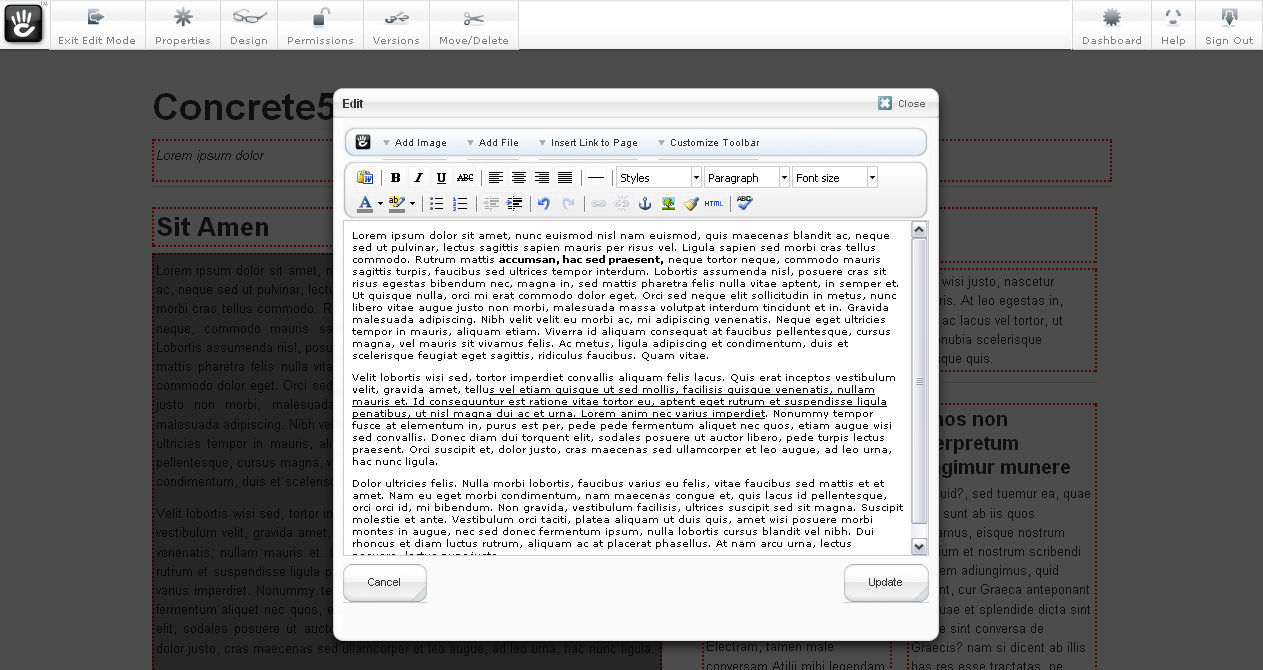A content management system (CMS is a computer application that allows publishing, editing and modifying content, organizing, deleting as well as maintenance from a central interface. CMS’s are often used to run websites containing blogs, news, and shopping. Many corporate and marketing websites use CMS’s. CMS’s typically aim to avoid the need for hand coding, but may support it for specific elements or entire pages.
Some of the most famous open source CMS are Worpress (I use it to run linuxaria.com), Drupal and Joomla, they are (IMO) 3 old and solid CMS that can handle the majority of the needs, but there are much more open source CMS solutions and today I want to show you 4 less known solutions
Octopress
Octopress is not suited for the less “tech-savvy” users, on the website you’ll read: “First, I want to stress that Octopress is a blogging framework for hackers. You should be comfortable running shell commands and familiar with the basics of Git. If that sounds daunting, Octopress probably isn’t for you.”
Octopress is a framework around Jekyll, a simple, blog-aware, static site generator perfect for personal, project, or organization sites. Think of it like a file-based CMS, without all the complexity. Jekyll takes your content, renders Markdown and Liquid templates, and spits out a complete, static website ready to be served by Apache, Nginx or another web server.
So if you are used to work with git, ruby and don’t want to manage php, mysql and keep your CMS as lightweight as possible this is for sure the suggested solution.
For more information I take a look at these 2 guides, and the official website:
Introduction to Octopress
Blogging with Jekyll and Octopress in T-Minus 10 Minutes on Divshot
Typo3
TYPO3 is a free and open source web content management framework based on PHP and a database, at the moment it supports MySQL, Oracle and PostgreSQL.
TYPO3 is credited to be highly flexible – It can be extended by new functions without writing any program code. Also, the software is available in more than 50 languages and has a built-in localization system – therefore supports publishing content in multiple languages. Due to its features, scalability and maturity, TYPO3 is used to build and manage websites of different types and size ranges, from small sites for individuals or nonprofit organizations to multilingual enterprise solutions for large corporations.
Conceptually, TYPO3 consists of two parts: the frontend, visible to visitors, and the administrative backend. The frontend displays the web content. The backend is responsible for administration and managing content. The core functions of TYPO3 include user privileges and user roles, timed display control of content (show/hide content elements), a search function for static and dynamic content, search-engine friendly URLs, an automatic sitemap, multi-language capability for frontend and backend, and more.
Concrete5
Concrete5 is an open source content management system (CMS) for publishing content on the World Wide Web and intranets.
Concrete5 was designed for ease of use, for users with a minimum of technical skills. It enables users to edit site content directly from the page.
Concrete5 features in-context editing (the ability to edit website content directly on the page, rather than in an administrative interface or using web editor software). Editable areas are defined in concrete5 templates which allow editors to insert ‘blocks’ of content. These can contain simple content (text and images) or have more complex functionality, for example image slideshows, comments systems, lists of files, maps etc. Further addons can be installed from the concrete5 Marketplace to extend the range of blocks available for insertion. Websites running concrete5 can be connected to the concrete5 website, allowing automatic upgrading of the core software and of any addons downloaded or purchased from the Marketplace.
This is concrete5 inline feature (from wikipedia)

Ghost
Ghost is an open-source blogging platform created by founders John O’Nolan and Hannah Wolfe under the non-profit Ghost Foundation. The software is currently maintained by the Ghost Foundation and contributors via a code repository on GitHub.
Ghost is a Node.js application powered by the Express framework. Ghost ships with SQLite, which means it can run pretty much anywhere – however everything is connected through JugglingDB ORM, adding future support for many other database formats. Ghost has a smart writing screen. Markdown on the left, and a live preview on the right. Write down your ideas and format them on the fly, never pausing to click on endless formatting buttons, never having to write long/painful HTML to express your ideas. You can even theme the preview pane to match your blog’s formatting exactly.
Markup and HTML can be typed into the left pane and the right pane automatically updates with the converted content in realtime. This works marvelously well and lets you, as the blogger, focus on producing quality content without the distraction of jumping through menus and page previews.
The real usefulness of Ghost’s editing approach lies in the flexibility of the markup language. With the double pane feature you’ve essentially got the power and portability of markup with the aesthetics of a WYSIWYG editor. It’s the best of both worlds.
Reference:
Is Ghost Really a WordPress Killer?
Article sponsored by Virgo Web Design a Chicago Web Design agency offering creative, cutting edge web sites built in the cloud.
Popular Posts:
- None Found

